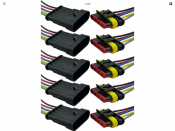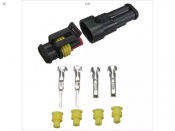I have for a long time cut the standard JST connectors off all of my led strings and replaced them with waterproof connectors. But have just put 10 strings into a pixels matrix, I have just plugged them all in and wired up power injection.
I plan on replacing them later, but for testing it is just easier.
What is everyone's opinion and/or experience?
Do you replace them? Or use them? and how well do they last?
I plan on replacing them later, but for testing it is just easier.
What is everyone's opinion and/or experience?
Do you replace them? Or use them? and how well do they last?




